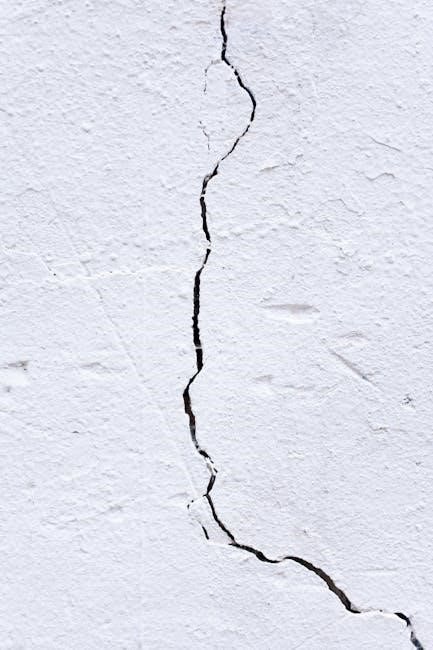
GE Washer Fault Code List PDF: An Overview
A GE washer fault code list PDF offers a comprehensive guide. This guide helps to diagnose problems with your GE washing machine. It provides explanations for error codes, aiding in troubleshooting and repair. Accessing this PDF can save time and money, allowing for quicker resolutions.

Understanding GE Washer Error Codes
GE washer error codes are diagnostic indicators displayed when a problem occurs. These codes help identify issues, like fill or drain problems, or unbalanced loads. Understanding these codes enables quicker troubleshooting and repair. Refer to the washer’s manual for specific code meanings and resolutions for your model.
Importance of Error Codes in Diagnosing Washer Issues
Error codes are crucial for efficient GE washer diagnostics. These codes serve as direct communication from the washer’s internal system. This communication pinpoints specific malfunctions. Without error codes, troubleshooting would involve a time-consuming, trial-and-error approach. Technicians and homeowners can quickly identify the source of the problem by decoding the error message. This minimizes downtime and repair costs.
Error codes also help to avoid unnecessary repairs. By accurately identifying the problem, you can focus on the specific component that needs attention. This prevents replacing functional parts, saving both time and money. Furthermore, error codes provide valuable information for ordering the correct replacement parts. This ensures that you have the necessary components on hand for a successful repair.
Ultimately, error codes empower users to make informed decisions about washer repairs. They enable you to assess the severity of the problem and determine whether a DIY fix is possible or if professional assistance is needed. This leads to more efficient and cost-effective washer maintenance.
Common GE Washer Error Codes and Their Meanings
Understanding common GE washer error codes is essential for quick troubleshooting. One frequent code is “E1,” indicating a fill problem where the washer cannot fill with water. This could stem from a water supply issue or a faulty inlet valve. “E2” signifies a drain problem, meaning the washer is unable to drain water. This may be due to a clogged drain pump or a blocked drain hose.
Another common code is “E3,” signaling an unbalanced load. This occurs when the laundry is unevenly distributed in the drum. This prevents the washer from spinning correctly. Some models also display error codes related to the door lock mechanism. These indicate that the door is not properly locked or that the door switch is malfunctioning.
These error codes can vary slightly depending on the specific GE washer model. It’s always best to consult your washer’s manual for the most accurate information. Regularly checking for and understanding these codes can save you time and money on repairs. They will help to ensure your washer operates efficiently.

GE Front Load Washer Error Codes
GE front load washers, known for their efficiency, display specific error codes to diagnose issues. A common error is related to the door lock, preventing the cycle from starting if not properly engaged. Another frequent code involves water drainage, indicating a potential clog in the drain pump or hose. Issues with water filling, such as slow or no fill, also trigger error codes, suggesting problems with the water inlet valve or supply.
Additionally, front load washers often have error codes related to motor or drive system malfunctions. These codes might point to a faulty motor, a worn-out belt, or a problem with the control board. Error messages related to the heating element, if present in the model, are also common, indicating issues with water heating during the wash cycle.
These error codes provide valuable insights into potential problems. Consulting your washer’s manual is crucial. It is important to understand the specific meaning of each code. Proper diagnosis and timely repairs will ensure the continued performance of your GE front load washer.
GE Top Load Washer Error Codes
GE top load washers, a staple in many homes, communicate issues through specific error codes. One common code relates to fill problems, signaling that the washer is unable to fill with water properly. This can stem from issues with the water inlet valve or a kinked water hose. Another frequently encountered error involves drainage problems, indicating the washer is unable to drain water effectively. This may be due to a clogged drain pump or a blocked drain hose.
Unbalanced load errors are also common in top load washers. These errors occur when the laundry is not evenly distributed in the drum, preventing proper spinning. Issues with the lid switch, which ensures the washer operates only when the lid is closed, can also trigger error codes. Motor-related errors, indicating problems with the motor or drive system, are also possible.
Understanding these error codes is essential for diagnosing and resolving issues with your GE top load washer. Always consult your washer’s manual for the specific meaning of each code. Promptly addressing these errors can help extend the lifespan of your appliance.

How to Access and Interpret Error Codes
Accessing GE washer error codes often involves entering a diagnostic mode. Consult your washer’s manual for specific instructions. Interpreting these codes requires referencing a GE washer fault code list PDF. This list provides meanings and troubleshooting steps.
Entering Diagnostic Mode
Entering diagnostic mode on a GE washer is crucial for accessing stored error codes. These codes provide valuable insights into potential issues affecting the washer’s performance. The process varies depending on the specific model, so consulting the user manual is always recommended. Typically, it involves a specific sequence of button presses, often manipulating the start, power, or cycle selection buttons. This sequence activates a hidden menu, revealing the washer’s internal diagnostics.
Once in diagnostic mode, you can navigate through the error history. The washer will display fault codes, which can then be cross-referenced with a GE washer fault code list PDF. This PDF outlines the meaning of each code, indicating the potential cause of the problem. Remember to record the error codes accurately, as they are essential for effective troubleshooting.
Some models may also offer component testing within the diagnostic mode, allowing you to check the functionality of individual parts like the motor or pump. Always exercise caution and follow safety guidelines when operating in diagnostic mode. If unsure, consult a qualified technician for assistance.
Troubleshooting Common Error Codes
When troubleshooting common error codes on your GE washer, a systematic approach is essential. Begin by consulting your GE washer fault code list PDF. This document provides detailed explanations of each error code, indicating potential causes and solutions. Before attempting any repairs, always disconnect the power supply to ensure safety.
For fill problems (often indicated by codes like E1), check the water inlet hoses for kinks or blockages. Ensure that the water supply valves are fully open and that the water pressure is adequate. If draining issues are present (E2), inspect the drain hose for obstructions and verify that the drain pump filter is clean. An unbalanced load (E3) can often be resolved by redistributing the clothes inside the drum.
If the error persists after addressing these common issues, more complex problems may be present. Consult the service manual or contact a qualified appliance repair technician. They will have the expertise to diagnose and repair more intricate mechanical or electrical faults. Remember, attempting repairs beyond your skill level can lead to further damage or injury. Always prioritize safety and seek professional help when needed.

Finding Specific Model Error Code Lists
To find error codes, consult your washer’s manual. Online resources like Sears PartsDirect can help. Look for PDFs of service manuals. Include your specific model number in your search. This ensures you get accurate, model-specific error code information.
Consulting the User Manual or Service Manual
Your GE washer’s user manual or service manual is the primary resource for model-specific error codes. These manuals provide detailed explanations of each code. They also offer troubleshooting steps. The user manual usually contains basic error codes and solutions. The service manual is more comprehensive.
A service manual offers in-depth information for technicians. It includes detailed diagrams and repair procedures. It lists all possible error codes for your washer. To find your specific model’s manual, check the product packaging. You can also visit the GE Appliances website.
Look for a “support” or “downloads” section. Enter your model number to find digital manuals. Many manufacturers offer downloadable PDFs. If you don’t have the physical copy, a digital version is convenient.
These manuals often include exploded views of the washer. It includes a guide to accessing diagnostic mode. This provides a complete picture for fixing the issue. Using the correct manual ensures accurate diagnosis. This allows you to resolve the problem efficiently.




